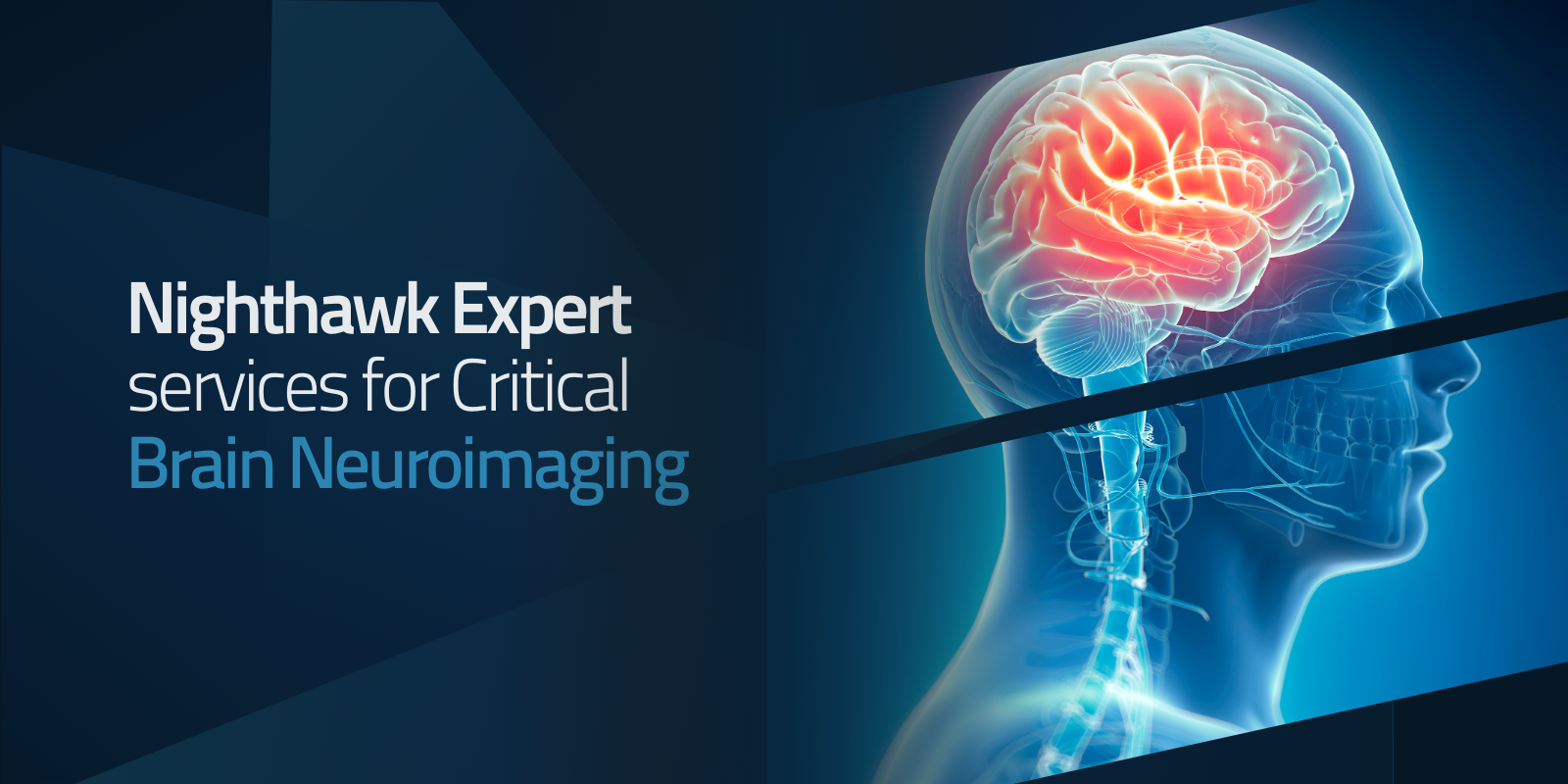

Teleradiology
How Aster Medical Imaging’s Nighthawk Service Enhances Brain Neuroimaging
Introduction
Brain neuroimaging has transformed the way neurologists and neurosurgeons diagnose, monitor, and treat neurological disorders. Whether it is detecting a life-threatening stroke, identifying a brain tumor, or monitoring brain activity, timely and accurate imaging plays a crucial role in patient care. In emergency settings, speed is as important as precision. This is where Aster Medical Imaging’s (AMI) Nighthawk Service offers a game-changing solution—delivering fast, accurate, and round-the-clock neuroimaging reports through advanced teleradiology.
The Critical Role of Brain Neuroimaging in Neurology
The brain is one of the most complex organs in the human body, and neurological conditions can manifest subtly or progress rapidly. Brain neuroimaging provides a direct window into structural and functional abnormalities, helping doctors make accurate diagnoses. In acute conditions like ischemic stroke, every minute counts, as delayed treatment can result in irreversible brain damage. Neuroimaging allows doctors to act quickly and tailor treatment strategies, thereby improving outcomes and reducing long-term disability.
What is Brain Neuroimaging?
Neuroimaging refers to the use of advanced imaging technologies to visualize the structure, function, and chemistry of the brain. These techniques not only detect visible changes such as lesions, tumors, or bleeding but also measure brain activity, connectivity, and metabolism. In modern medicine, neuroimaging has become indispensable for both routine neurology practice and emergency care.
Types of Neuroimaging Techniques for the Brain
Several imaging modalities are used to study the brain, each with unique benefits:
- Computed Tomography (CT): Quick and widely available, CT scans are the first-line choice in emergencies such as stroke or trauma to detect bleeding, fractures, or masses.
- Magnetic Resonance Imaging (MRI): Provides detailed anatomical and functional information about brain tissue, ideal for detecting tumors, demyelinating diseases, and subtle abnormalities.
- Positron Emission Tomography (PET): Used to assess brain metabolism and function, often applied in dementia or epilepsy evaluation.
- Functional MRI (fMRI): Maps brain activity by measuring changes in blood flow, useful in surgical planning or cognitive studies.
Other techniques such as MR spectroscopy, diffusion tensor imaging (DTI), and angiography add further layers of diagnostic precision.
Clinical Applications: Stroke, Tumors, and Brain Activity Monitoring
Neuroimaging supports clinicians across a wide spectrum of conditions:
- Stroke: Immediate CT or MRI helps differentiate ischemic from hemorrhagic strokes, guiding treatment such as clot-busting therapy or surgery.
- Brain Tumors: MRI is the gold standard for identifying tumor type, size, and spread, and for planning surgical or radiotherapy interventions.
- Traumatic Brain Injury (TBI): CT scans quickly identify bleeding or fractures, while MRI assesses long-term effects.
- Neurodegenerative Disorders: PET and MRI assist in diagnosing Alzheimer’s disease, Parkinson’s disease, and multiple sclerosis.
- Functional Brain Mapping: MRI helps neurosurgeons avoid critical brain regions during surgery.
Challenges in Timely Brain Imaging
Despite technological advances, brain imaging faces significant challenges:
- Time sensitivity: Emergency neuro cases require immediate reporting, often outside regular working hours.
- Radiologist shortages: Many hospitals lack access to subspecialty-trained neuroradiologists during nights or holidays.
- Geographic barriers: Smaller or remote hospitals may not have in-house expertise.
- High patient load: Increasing demand for imaging can delay reports, affecting treatment outcomes.
These challenges highlight the need for reliable, 24/7 teleradiology services.
The Role of Teleradiology in Brain Neuroimaging
Teleradiology bridges the gap by allowing imaging scans to be transmitted digitally to radiologists located anywhere in the world. This model ensures:
- 24/7 availability of expert reporting.
- Faster turnaround time, especially for critical cases like stroke.
- Access to subspecialty expertise, such as neuroradiology, regardless of hospital location.
- Operational efficiency for hospitals by reducing workload on in-house radiologists.
How AMI’s Nighthawk Service Enhances Brain Imaging Accuracy & Speed
Aster Medical Imaging’s Nighthawk Service specializes in delivering fast, high-quality neuro imaging reports during nighttime and off-hours. Key advantages include:
- Rapid Turnaround: Emergency brain CT or MRI scans are reported within minutes, enabling immediate clinical decisions.
- Subspecialty Expertise: Reports are reviewed by experienced neuroradiologists, ensuring accuracy and clinical relevance.
- Seamless Integration: The Nighthawk platform integrates smoothly with hospital PACS systems, allowing secure transmission and easy access to reports.
- Round-the-Clock Coverage: With a global team of radiologists, AMI ensures continuous coverage across time zones.
- Improved Patient Outcomes: By reducing reporting delays, AMI helps doctors initiate life-saving treatments faster, especially in stroke or trauma cases.
Future Trends in Neuroimaging
The future of brain neuroimaging is moving towards:
- Artificial Intelligence (AI): AI-powered algorithms can quickly detect abnormalities like hemorrhage or stroke on CT scans, supporting radiologists in emergencies.
- Advanced Functional Imaging: Techniques such as connectomics and quantitative MRI are expanding understanding of brain networks.
- Hybrid Imaging: Combining PET-MRI for both structural and functional insights in a single scan.
- Personalized Medicine: Tailoring treatment strategies based on imaging biomarkers that predict disease progression.
Conclusion: Smarter, Faster Neuroimaging Reporting with AMI
Brain imaging is central to modern neurology, and timely reporting can save lives. However, challenges such as night-time coverage, radiologist shortages, and urgent clinical needs make it difficult for hospitals to provide round-the-clock reporting. Aster Medical Imaging’s Nighthawk Service addresses these challenges by combining speed, accuracy, and subspecialty expertise in neuroimaging reporting. With this service, hospitals and patients benefit from smarter, faster, and more reliable brain scan interpretations—anytime, anywhere.
Key Takeaways
- Brain neuroimaging is critical for diagnosing and managing neurological disorders like stroke, tumors, and trauma.
- Techniques such as CT, MRI, PET, and fMRI provide detailed insights into brain structure and function.
- Timely reporting is often limited by radiologist availability and workload.
- Teleradiology, especially AMI’s Nighthawk Service, ensures 24/7 rapid and accurate reporting.
- Future advancements like AI and hybrid imaging will further enhance neuroimaging precision and speed.
FAQs
It is the use of imaging technologies such as CT, MRI, PET, and fMRI to visualize the brain’s structure and function.
The main techniques are CT, MRI, PET, and fMRI.
CT, MRI, PET, fMRI, and MR spectroscopy are commonly used.
Yes. Scans like CT and MRI can reveal brain injuries, bleeding, tumors, and structural damage.
More from AMI
How to Choose a Prospective Teleradiology Service Provider
07/08/2023
10 Strategies To Prevent Burnout In Radiology
09/01/2023
How Teleradiology Solutions Help Hospitals Cut Turnaround Time
20/08/2025
Radiology Online Reporting: Transforming Diagnosis with Speed and Accuracy
31/07/2025
Cardiovascular Imaging: Expanding Access to Advanced Heart Care with Teleradiology
29/09/2025
Intra- Operative 3D Imaging With O- Arm Making Complex Spine Surgeries Safe and Accurate
30/11/2022
Why Hospitals Prefer Teleradiology Outsourcing for Accurate and Timely MSK Injury Reports
14/11/2025
Advances In Neuroradiology
06/01/2023
Imaging Instrumentation Trends In Clinical Oncology
26/06/2023
Teleradiology's Contribution to Timely Emergency Diagnoses
04/10/2023
What is Diagnostic Radiology? Understanding its Tests and Procedures
14/08/2023
Scope of Radiologist in India
29/08/2023
Imaging In Pregnancy
18/01/2023
Emerging Techniques in Radiology By Dr. Namita
10/11/2022
MRI Spine Thoracic: How Teleradiology Enhances Faster, Accurate Diagnosis
29/09/2025
Improvement of Patient Care Through Teleradiology
03/07/2023
The Future of MRI: Advancements and AI Integration in Online MRI Reporting
19/05/2025
How Teleradiology Reporting Services Are Revolutionizing Frozen Shoulder Diagnosis and Reporting
17/11/2025
How to Increase the Efficiency of the Radiology Equipment
21/08/2023
Behind The Scenes of Teleradiology: How Digital Imaging Is Changing Diagnostic Medicine
16/10/2023
How Teleradiology Supports Musculoskeletal Pain Specialists in Diagnosis
20/08/2025
Sports-Related Injuries and the Importance of Radiology
30/01/2023
Revolutionizing Indian Healthcare: Unlocking the Potential of Teleradiology in Remote Areas
27/09/2023
Empowering Radiologists-Teleradiology Redefines the Role of Imaging Specialist
09/10/2023
Emerging Trends and Technologies in Medical Imaging
19/06/2023
Radiology Practices
30/11/2022

AMI Expertise - When You Need It, Where You Need It.
Partner With Us

